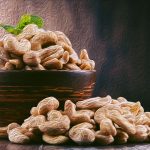#saffron #spice #expensive
In the last 5 yrs, many small farms across the US have begun growing saffron with the hope of tapping a highly lucrative niche in the artisanal spice market. Pound-for-pound on par with gold, high-end saffron sells for as much as $50 a gram.
To a farmer, Crocus sativus has a lot going for it beyond the price tag: plant it once and it will come back yr after yr and multiply on its own, it adapts to extreme environments and poor soils, and its harvest comes when other crops no longer need attention.
On the other side, nearly every step of growing and processing saffron must be done by hand. As with any gold rush, success with the gold spice requires a huge amount of perseverance and obsession as these farmers are finding out.
Saffron’s value, and perhaps a large part of its allure to the human imagination for millennia, 1 of the oldest depictions of saffron is a 3,000-yr-old fresco at the Palace of Minos at Knossos in Crete, comes from its elusive nature. Each blossom lasts 3 to 4 days and produces 3 tiny scarlet stigmas, which must be separated from the other flower parts and then dried within 24 hrs of picking. And it takes about 500 of these aromatic threads to produce a single gram. You can do a full day’s work and hold in your palm a harvest weighing less than a hummingbird.
Like most spices, saffron has its cultural niche
I Iran and Arabia, it appears in everything from cocktails to ice cream, even beauty cream and fabric dye.
In Mediterranean cuisine, saffron has lent its distinctive woodsy note to bouillabaisse since Roman times, and,
In India some cooks add it to recipes like biryani, turning layers of rice cooked with spices, vegetables and meat a sunny yellow. Used as much for the rich golden color as the sweet earthy aroma it gives the food, its taste is more atmospheric than assertive, like freshly mown hay drying in the Sun with bitter herbs and flowers.
Native to the Middle East, saffron is typically grown in hot, dry climates and it is harvested for export only in places where hand labor is cheaply available. Around 90% of the world’s saffron is grown in Iran. Spain, Afghanistan and India are also exporters.
The US imports roughly 75 tonnes of saffron a yr and farming it domestically has been nearly unheard of since Pennsylvania Dutch settlers grew it in the 1700s, and sold it to Spanish colonists in the Caribbean.
The outlay of time and money to plant an acre of saffron can be daunting. The corms themselves, which most farms import from specialized growers in Holland, cost around 20 to 40 cents each, which could run to $30,000 for an acre. The 1st yr’s harvest will not impress, but 3 yrs after planting, Skinner estimates, 1 acre of Crocus sativus could produce $100,000 of saffron. These are the kind of numbers that UVM’s North American Center for Saffron Research and Development has estimated based on their research to date.
To harvest their half-acre requires 14 people working up to 14 hrs a day. Young people who are attracted to the madcap adventure of picking saffron as an endurance sport come to camp in the fields for a few wks. They pick at least 40,000 flowers before the intense Sun hits the field and wilts them, then all afternoon in the shade of walnut trees they separate the stigmas from the petals with pollen-stained hands and place the threads into dehydrators. After drying, the saffron is sealed in jars.
Try these sites for American-grown saffron:
Lemonfair Saffron Co; lemonfairsaffron.com
Peace and Plenty Farm; peaceplentyfarm.com
Meraki Meadows; txsaffron.com
Calabash Gardens; calabashgardens.com
Have a happy, prosperous weekend, Keep the Faith!









